Mastering Baking: Essential Tools and Techniques

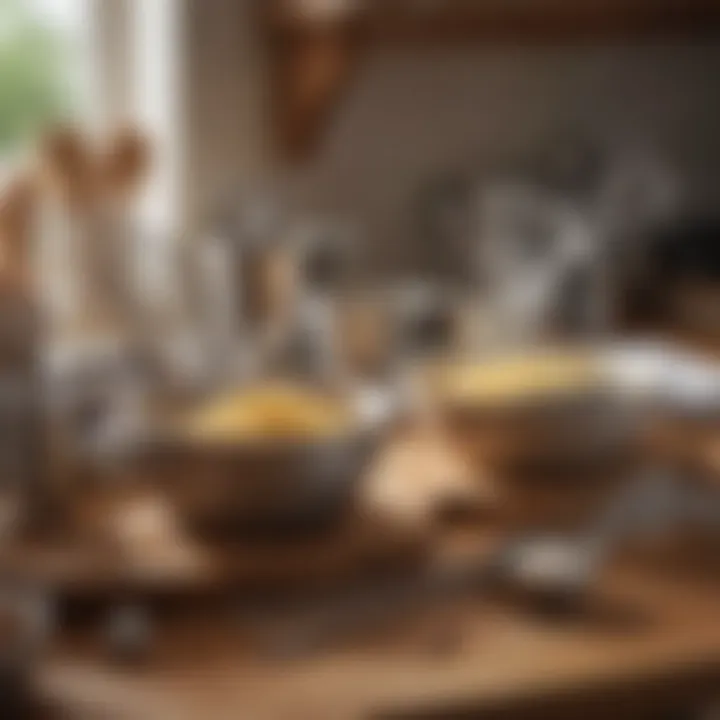
Intro
Baking is a complex blend of artistry and precision. Understanding its components is critical for both novices and veterans in the kitchen. This article naavigates through essential baking elements, ensuring a more satisfying experience and superior outcomes. Let's explore crucial aspects including ingredients, tools, methods, and troubleshooting.
Recipe Overview
- Catchy Name: Classic Vanilla Layer Cake
- Yield: Serves 8 portions
- Total Time: 45 min prep, 30 min cook
- Difficulty: Medium
- Main Ingredients:
- All-purpose flour
- Granulated sugar
- Unsalted butter
- Eggs
- Vanilla extract
- Baking powder
Step-by-Step Instructions
- Prepping Ingredients: Start by measuring out all your ingredients. Use a digital scale for more accuracy and ease. This will streamline the process when mixing.
- Making the Batter: Cream together the unsalted butter and granulated sugar until light and fluffy. This typically takes about 2-3 minutes on medium speed with a mixer.
- Incorporating Eggs: Add eggs one at a time, mixing well after each addition. It helps to bring the mixture together and adds moisture.
- Adding Dry Ingredients: In a separate bowl, sift together the all-purpose flour and baking powder. Gradually add this mixture to the wet batter, alternating with the milk. Mix just until combined.
- Baking: Pour the batter into prepared cake pans. Bake in a preheated oven at 350°F (175°C) for about thirty minutes, or until a toothpick inserted in the center comes out clean.
- Cooling: Allow the cakes to cool in the pans for around 10 minutes before transferring them to a wire rack. This helps prevent them from becoming soggy.
Time-Saving Strategies
- Batch Preparation: While the cake bakes, you can prepare frosting.
- Ingredient Substitution: Use buttermilk instead of milk for a richer flavor.
Nutritional Information
- Calories per Portion: Approximately 350 calories
- Nutrient Breakdown: 6g protein, 15g fat, 48g carbs
- Beneficial Nutrients: Contains calcium from milk and protein from eggs, contributing to overall nutrition.
Quick Cooking Tips
- Use a standing mixer for quick mixing and reduced effort.
- Multitask by preparing frosting while the cake bakes. Just ensure you check the oven to avoid overcooking.
- Experiment with healthier alternatives, such as using coconut oil instead of butter, or almond flour for gluten-free options.
Related Recipes & Variations
- Frosting Ideas: Try cream cheese or chocolate ganache.
- Dietary Versions: Consider a vegan approach using applesauce instead of eggs.
- Encourage Creativity: Readers can share their own unique frosting flavors or customization tips.
Baking well requires patience and practice. With each cake you create, your confidence in this culinary art form will undoubtedly grow.
Prologue to Baking Essentials
Baking is more than just a method for preparing food; it is a careful balance of science and artistry. Understanding the essential components of baking helps create better outcomes not just in the taste, but also in the appearance and texture of baked goods. In this section, we delve into what baking truly entails, laying the groundwork for a thorough understanding of the other elements discussed in this article.
Defining Baking
Baking can be defined as a culinary technique that involves cooking food through prolonged dry heat, typically in an oven. The key to successful baking lies in precise measurements and techniques, ensuring that ingredients interact optimally to produce the desired results. Various baked goods, such as bread, cakes, and pastries, require different methods and approaches. Thus, understanding the fundamental definition of baking allows for a deeper comprehension of the various techniques that follow.
Importance of Understanding Baking Basics
Understanding the basics of baking empowers both novice and seasoned bakers. Familiarity with techniques and ingredients is crucial, as it affects the final texture and taste significantly. Here are several reasons why this knowledge is beneficial:
- Consistency: Knowledge in baking basics promotes consistency in the results. When one understands how various ingredients work together, it helps in recreating successful recipes.
- Creativity: Knowing the base fundamentals of baking opens avenues to experimentation. Bakers can modify recipes thoughtfully, adding unique flavors or making adjustments based on dietary needs.
- Problem-solving: A strong grasp of baking basics helps troubleshoot common issues, like over-rising or undercooking, leading to improved baking outcomes.
- Confidence: Finally, understanding the essential elements can instill confidence, making the baking process less daunting.
"Baking is a craft that requires not only skill but a good understanding of the ingredients used."
By establishing a foundation in the essentials of baking, you begin a journey that enhances not just your personal skills but also the quality of the baked items you create.
Core Baking Ingredients
Understanding core baking ingredients is essential for crafting successful baked goods. Each component plays a significant role, influencing texture, flavor, and overall quality. Familiarity with these ingredients not only aids in following recipes but also empowers bakers to experiment and create innovative variations.
Flour Types and Their Uses
Flour is the backbone of most baked products. Its type dramatically affects the final outcome. Selecting the right flour can mean the difference between a dense loaf and a light, airy cake.
All-Purpose Flour
All-purpose flour is perhaps the most versatile flour available. It combines features of bread and cake flours, making it suitable for a varied range of recipes. The key characteristic of all-purpose flour is its moderate protein content. This allows it to provide a decent structure, while still being tender enough for cakes. All-purpose flour is commonly favored because it can be used in both sweet and savory dishes. Its unique feature is that it absorbs liquid well, creating a good moisture balance in the final product. However, it may not always achieve the ideal texture for specialized items like pastries or artisan breads.
Cake Flour
Cake flour has a lower protein content compared to its all-purpose counterpart. This specific attribute is crucial for producing soft, tender cakes. The key characteristic of cake flour is its fine texture, which helps develop less gluten when mixed, resulting in a finer crumb. This flour type is popular for making delicate cakes such as chiffon or sponge. Its unique feature is its bleaching process, which enhances the flour's ability to retain moisture. The disadvantage of cake flour is its limited use; it may not provide enough structure for recipes requiring a sturdier base.
Bread Flour
Bread flour stands out due to its higher protein content. This characteristic is vital for making yeast-leavened breads that require extensive gluten formation. The primary benefit of bread flour is its ability to create a strong dough, resulting in a chewy texture and excellent rise. Bread flour is ideal for rustic loaves, bagels, and pizza crusts. Its unique feature is that it often contains added vital wheat gluten, increasing elasticity. However, it is not suitable for recipes calling for more tender baked goods, as the high gluten can lead to toughness.
Leavening Agents
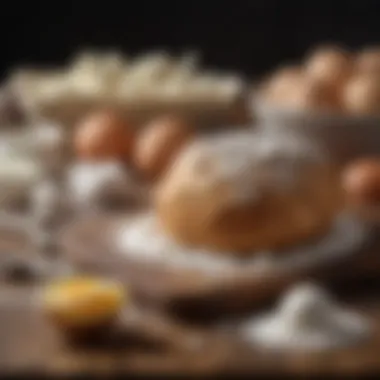
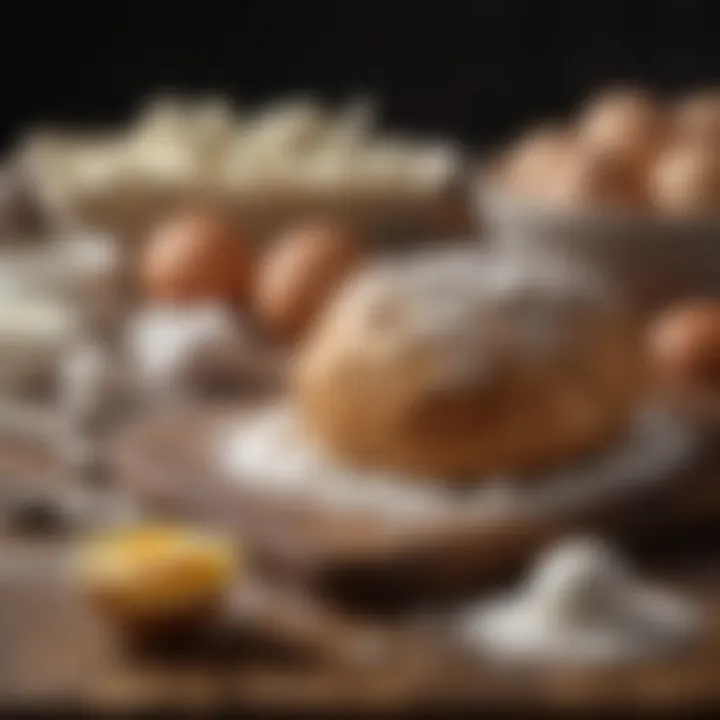
Leavening agents are crucial in creating the desired lift and texture in baked goods. They are the reasons behind the rise in cakes and breads, making them fluffy and light.
Baking Powder
Baking powder is a chemical leavening agent that contains both an acid and a base. Its key characteristic is that it requires moisture and heat to activate. As the baking powder reacts, it produces carbon dioxide, which causes the batter to rise. It is a popular choice for a range of recipes because it is easy to use and does not require additional acidity. However, it can lose potency over time, so it is essential to check expiration dates.
Baking Soda
Unlike baking powder, baking soda is a pure alkaline compound that requires an acid for activation. Its key characteristic is that it reacts immediately when combined with an acid, producing carbon dioxide quickly. This makes it ideal for recipes like cookies and pancakes that need a quick rise. The advantage of baking soda is its effectiveness in lowering acidity in recipes. However, using too much can lead to an unpleasant taste and a dark color in baked goods.
Yeast
Yeast is a living organism that ferments sugars, producing carbon dioxide and alcohol in the process. Its key characteristic is its ability to enhance flavor through fermentation, contributing to a complex taste profile in breads. Yeast is suitable for a variety of recipes, particularly those involving bread-making. Its unique feature is its need for time; dough must rise, allowing flavors to develop. The downside is that it requires specific conditions, such as warmth and moisture, for proper growth.
Sweeteners in Baking
Sweeteners add flavor and can affect texture and browning in baked goods. Understanding the different types can help enrich recipes.
Granulated Sugar
Granulated sugar is the most common type used in baking. Its key characteristic is its ability to dissolve easily, leading to a smooth texture in batters. Granulated sugar not only provides sweetness but also assists in browning through caramelization. This makes it a beneficial option for cookies and cakes alike. However, too much granulated sugar can lead to overly sweet baked goods and can impact structure.
Brown Sugar
Brown sugar contains molasses, giving it a distinct flavor and moisture content. This makes it a great choice for rich, chewy recipes. Its key characteristic is its ability to create a softer texture in cookies and cakes. A unique feature is that brown sugar can also enhance moisture, making products last longer. The disadvantage lies in its varying moisture content, which can affect the consistency of baked goods.
Honey and Syrups
Honey and syrups provide alternative options for sweetness. They add unique flavors and moisture to recipes. Honey is particularly prized for its natural sweetness and aroma. However, it can be tricky because it adds liquid to the mixture, necessitating adjustments in other wet ingredients. Maple syrup and agave syrup serve similar roles but can also impart their flavors, making recipes versatile.
Fats and Oils
Fats and oils contribute to flavor, texture, and moisture. They are crucial in creating the desired properties in baked products.
Butter
Butter is revered in baking for its rich flavor and ability to create a tender texture. Its key characteristic is the creaming method, which incorporates air into the batter, resulting in a light texture. Because of these qualities, butter is a popular choice for cookies, cakes, and pastries. Its unique feature is its ability to emulsify, bringing other ingredients together smoothly. The downside is that it can solidify in cooler temperatures, affecting consistency.
Vegetable Oil
Vegetable oil offers a neutral flavor and remains liquid at room temperature. Its key characteristic is its ability to moisten baked goods, preventing them from drying out. It is frequently used in recipes for cakes and muffins. However, it doesn’t provide the same flavor depth or texture as butter, making it less desirable for specific recipes.
Margarine
Margarine often serves as a butter substitute, typically made from vegetable oils. Its key characteristic is its versatility in baking, particularly in recipes that require spreadability. It is a beneficial choice for individuals looking for dairy-free alternatives. However, the flavor may lack the richness found in butter, impacting the overall taste of baked goods.
Eggs: Their Role in Baking
Eggs are fundamental to various baking recipes, providing structure and moisture as well as contributing to flavor. They also assist in emulsifying fats, creating an even blend of ingredients. Furthermore, eggs help in leavening, adding volume to mixtures, particularly in cakes and soufflés. Understanding how different egg uses influence texture and richness will enhance baking outcomes.
Dairy Products in Recipes
Dairy products add moisture and richness while enhancing flavor profiles. Their proper use can elevate the quality of baked goods.
Milk
Milk is a common liquid in baking that adds moisture and contributes to the overall flavor. Its key characteristic is the ability to assist in the browning process, enhancing color in baked items. This makes milk an excellent addition to bread and muffin recipes. However, the fat content can alter the final texture, necessitating adjustments.
Cream
Cream can add richness, density, and flavor to desserts and pastries. Its key characteristic is its high-fat content, which contributes to a velvety texture. Cream is often used in frostings and sauces, lending a luxurious feel to recipes. However, its richness can overwhelm lighter flavors if not balanced properly.
Yogurt
Yogurt introduces tanginess while providing moisture. Its key characteristic is its acidity, which can enhance leavening when used alongside baking soda. Yogurt is a good choice for making cakes and muffins fluffy and moist. However, its flavor may be too pronounced for delicate recipes, which could impact the final outcome.
Understanding these core baking ingredients is vital for achieving favorable results in the kitchen. Each component brings distinct qualities that contribute to the overall baking experience, allowing for creativity and innovation in crafting delicious goods.
Essential Equipment for Every Baker
Baking is not only about the right ingredients but also about having the proper equipment. The right tools make the baking process more efficient and enjoyable. Understanding which tools are essential is vital. Each type of equipment serves a specific purpose, contributing to the overall success of any baking endeavor.
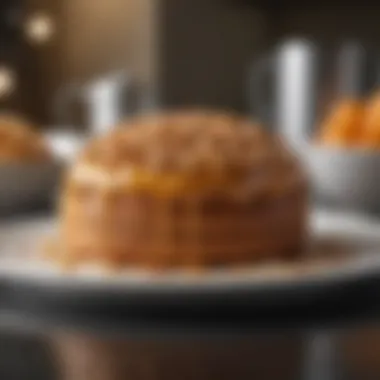
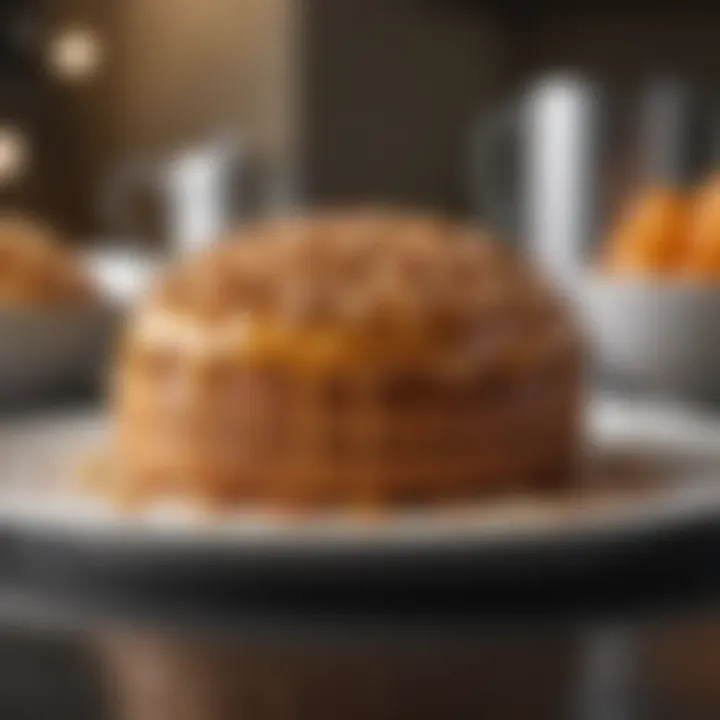
Mixing Tools
Mixing Bowls
Mixing bowls are fundamental in any kitchen. They allow for combining ingredients effectively while preventing spills. A key characteristic is that they come in various materials, including glass, plastic, and stainless steel. Glass mixing bowls, for instance, are popular due to their non-reactive properties. They allow for easy monitoring of mixture consistency. Additionally, glass bowls can often go from the oven to the table. However, they are fragile and can break easily compared to plastic bowls, which are lighter but less durable.
Whisk
The whisk is a versatile tool important in blending and aerating ingredients. Its key characteristic is its slender shape and flexible wires, which incorporate air into mixtures, crucial for achieving light textures in recipes like meringues. A whisk is beneficial because it is easy to handle and easy to clean. However, it may not be suitable for heavy mixtures like dough, where a sturdier tool is necessary.
Electric Mixer
An electric mixer is invaluable for those who often bake. This tool can save time and effort, especially when mixing dense batters. A standout feature is its various speed settings, allowing for precise control over mixing processes. An electric mixer is a popular choice. However, it requires electricity, and its initial cost is higher than manual mixers. For those committed to baking regularly, the investment is worthwhile.
Measuring Instruments
Measuring Cups
Measuring cups are essential for achieving accurate ingredient quantities. They come in different sizes, often categorized by dry and liquid measures. The ability to measure accurately helps ensure consistency in recipes. A common choice is a glass measuring cup, which typically has clear markings and is microwave safe. One drawback, however, is that the transparent materials can be hard to read in low light.
Measuring Spoons
Measuring spoons are equally important for smaller quantities. They enable precise measurements of ingredients like spices and extracts. The key advantage is their compact size, making them easy to store. Stainless steel measuring spoons are popular since they are durable and easy to clean. However, the drawback is they can sometimes be less practical for recipes calling for larger volumes.
Kitchen Scale
A kitchen scale is increasingly important for precision in baking. It allows for weighing ingredients by grams or ounces, which is particularly crucial for recipes that require accuracy. The main advantage is that it eliminates the guesswork involved in volume measurements. Digital scales are often favored for their ease of use. A downside, however, is that some users may find them unnecessary, preferring traditional measuring methods.
Baking Pans and Trays
Loaf Pans
Loaf pans are essential for baking bread or other loaf-shaped items. They are often made from metal or glass, each material offering different heat conduction properties. A common choice is the metal loaf pan, which provides even browning. However, glass pans can be desirable for their aesthetic value but tend to cook slower.
Cookie Sheets
Cookie sheets are designed for baking cookies evenly and preventing sticking. Their flat surface promotes even baking. A key characteristic is their non-stick coating, which makes them easy to handle. However, non-stick coatings can wear off over time, necessitating replacement more often than traditional pans.
Cake Tins
Cake tins come in various shapes and sizes, suitable for different types of cakes. They can be round, square, or rectangular. A notable feature is the detachable bottom design often found in springform pans, making cake removal easy. However, they may be prone to leaks if the pan is not properly sealed.
Ovens and Their Importance
Ovens play a critical role in the baking process. A well-functioning oven ensures that baked goods are cooked evenly and thoroughly. Each type of oven, whether convection or conventional, has unique characteristics affecting baking times and results. For instance, convection ovens circulate air, leading to quicker and more uniform baking. It’s essential to understand the specific requirements of your oven for optimum results.
Cooling Racks
Cooling racks are often an overlooked piece of equipment. They provide a stable surface for baked goods to cool down. Proper cooling helps maintain the desired texture and avoids sogginess. A key benefit is airflow around the baked goods, which is often vital for cookies and breads. However, using improper cooling racks can result in uneven cooling, which may affect the final product.
Baking Techniques to Master
Understanding various baking techniques is essential for anyone who wishes to excel in the kitchen. Mastering these techniques can significantly improve the final product's quality and consistency, ensuring that baked goods turn out as intended. Each method serves a purpose, affecting taste and texture in unique ways. Additionally, being well-versed in these skills instills confidence in both novice and seasoned bakers, allowing them to explore their creativity and refine their craft.
Measuring Ingredients Accurately
Accurate measurement of ingredients is vital in baking. Unlike cooking, where one can adjust seasonings and tastes as they go, baking demands precision. An incorrect measurement can lead to dry or soggy products, affecting the overall outcome. For instance, too much flour can result in dense bread, while too little may create a fail to rise properly.
To ensure accuracy, bakers should consider using a kitchen scale when possible. Measuring cups can vary slightly between brands, but scales provide consistent results. Remember to level off dry ingredients for the correct measure.
Mixing Methods Explained
Baking involves several mixing methods. These methods determine the final product's structure and texture. Two primary techniques include the creaming method and the one-bowl method.
Creaming Method
The creaming method is a popular technique used primarily for cookies and cakes. This method consists of beating fats, typically butter, with sugar until the mixture is light and fluffy. The incorporation of air during this process helps to create a tender and airy texture in the final product.
Key characteristic: The air pocket formation during the creaming process is what makes this method particularly effective. This is a beneficial choice when aiming for light and fluffy baked goods.
Unique feature: While this method yiedls excellent results for specific recipes, it requires attention to detail, as over-mixing can produce undesirable results, such as tough texture.
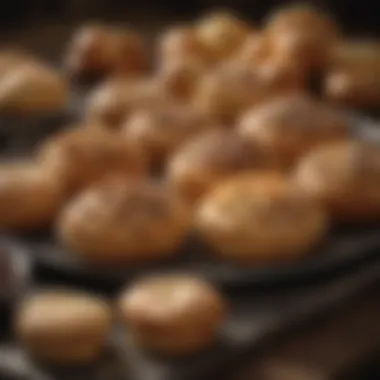
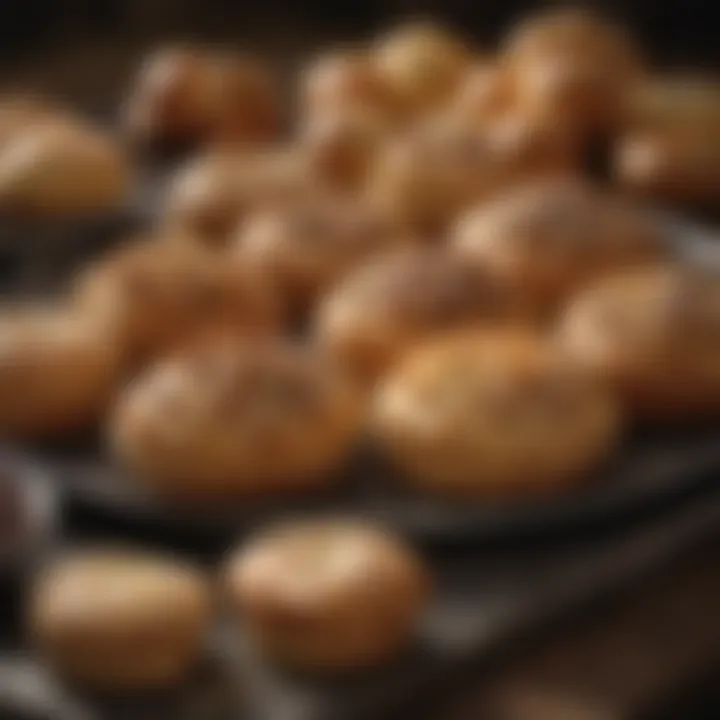
One-Bowl Method
The one-bowl method is a straightforward technique that simplifies the mixing process. As the name suggests, all ingredients are combined in a single bowl. This method is ideal for quick and easy preparation, making it a favorite among home bakers.
Key characteristic: The one-bowl method allows for less clean-up, promoting a more relaxed baking experience. It is particularly popular for recipes like muffins and brownies, where a tender texture is desired.
Unique feature: It usually yields excellent results in terms of flavor. However, careful mixing is still necessary since overmixing can develop gluten, leading to denser baked goods.
Baking Temperature Guidelines
Baking temperature plays a critical role in the outcome of baked goods. Each recipe comes with specific temperature recommendations that ensure even cooking and browning. For instance, cookies often bake at a higher temperature than cakes because they require less time to cook. It's important to preheat the oven properly, as placing baked goods in an unheated oven can lead to unexpected results.
Monitoring the temperature is just as crucial as setting it. An oven thermometer can help ensure that your oven is running at the correct temperature. Adjustments might be necessary based on equipment variation or even altitude, which can affect baking performance.
Cooling and Storing Baked Goods
Cooling baked goods properly is equally important as the baking process itself. When removing items from the oven, they should be placed on cooling racks rather than left in their pans. This practice helps even out the moisture level and prevents sogginess. Baked goods that are not adequately cooled can result in residual heat, creating condensation which contributes to a loss of texture.
Storing baked items also requires attention. Items should be kept in airtight containers to maintain freshness. Understanding specific storage methods is necessary for different baked goods, ensuring they retain their quality for as long as possible. For example, cookies can often be stored at room temperature, while cakes may benefit from refrigeration, especially if frosted.
Properly cooling and storing baked goods is essential to preserve flavor, texture, and appearance.
Troubleshooting Common Baking Issues
Understanding how to troubleshoot common baking issues is an essential part of any baker's journey. Even the most skilled bakers encounter problems that can affect the quality and outcome of their baked goods. Recognizing these issues early can save time and resources, and improve overall baking skills. This section aims to clarify potential pitfalls and solutions, ensuring a smoother baking experience.
Understanding Taste and Texture Problems
Taste and texture are vital components of any baked product. Problems in these areas can arise from various factors, including ingredient quality, measurement inaccuracies, or incorrect cooking temperatures.
Common Causes of Taste Issues:
- Quality of Ingredients: Using stale or low-quality flour, sugar, or butter can significantly affect the final flavor. Fresh ingredients yield better results.
- Incorrect Ratios: A recipe’s balance of sweeteners, salts, and acid influences flavor. Too much or too little can lead to a dish that tastes bland or overly sweet.
Texture Problems:
- Mixing Techniques: Overmixing batter can cause baked goods to turn dense or chewy. Conversely, undermixing may leave lumps, resulting in uneven texture.
- Ingredient Temperature: Ingredients like eggs and butter should generally be at room temperature. Cold ingredients can lead to poor emulsification, affecting the texture.
To achieve desired results, always follow recipes closely and adjust ingredient quality.
Identifying Over and Under Baking
Baking time and temperature are critical in achieving the perfect baked item. Underbaking can lead to raw centers while overbaking results in dry products.
Signs of Underbaking:
- Wet Center: A toothpick inserted should come out clean. If it comes out with batter, consider it underbaked.
- Doughy Texture: Products may collapse upon cooling if they are not firm enough.
Signs of Overbaking:
- Color Change: Brownness indicates overbaking. The outer edges might begin to harden while the inside dries out.
- Dryness: Overbaked goods lose moisture, which can drastically affect flavor and enjoyment.
In summary, monitoring the baking process closely and conducting small tests can help ensure optimal results.
"Attention to detail during baking can prevent most issues, making the experience less stressful and more rewarding."
By honing the ability to troubleshoot these common baking issues, both novice and experienced bakers will be better equipped to create delicious and satisfying baked goods.
Closure: Elevating Your Baking Skills
Successful baking is more than simply assembling ingredients and following a recipe. It requires an understanding of the essential components that contribute to the final product. This article has highlighted key elements such as the importance of choosing quality ingredients, mastering proper techniques, and utilizing the right equipment. Each of these facets plays a critical role in determining the outcome of baked goods.
Familiarity with these elements enhances your confidence in the kitchen. A skilled baker knows how to adjust measurements, modify temperatures, and troubleshoot common issues. These considerations elevate baking from a task to a gratifying experience. By being mindful of ingredient functionality and baking processes, one increases the likelihood of successful outcomes.
Summary of Essential Components
Here is a concise overview of the essential components discussed:
- Core Ingredients: Understanding different types of flour, leavening agents, sweeteners, fats, eggs, and dairy is crucial. Each component contributes distinct characteristics to your baked goods.
- Equipment: Essential tools such as mixing bowls, measuring instruments, and baking pans help in achieving precise results. The right appliances, like ovens and cooling racks, are equally important.
- Techniques: Mastering techniques such as accurate measuring, effective mixing, and knowing baking temperatures can significantly influence the quality of the outcome. Cooling and storing your creations responsibly enhances their longevity and flavor.
- Troubleshooting: Recognizing common issues like over-baking or texture problems equips you to salvage potentially ruined recipes, saving time and resources.
Integration of these components enables both novice and experienced bakers to navigate various baking challenges successfully.
Encouragement to Experiment and Explore
While understanding the foundational elements is vital, baking also invites creativity. Experimentation serves as a path to personalizing your culinary repertoire. Encourage yourself to try new ingredients, techniques, and recipes. Modification often leads to delightful discoveries. Perhaps substituting almond flour for traditional all-purpose flour in a cake recipe could yield a unique flavor and texture.
Exploring variations in baking not only enhances skills but also builds a richer understanding of flavors and techniques. Attend workshops, participate in online forums, and engage with fellow culinary enthusiasts on platforms like Reddit. Improvisation can foster a deeper connection to the craft.
In baking, as in life, learning often unfolds through trial and challenge. Embrace it.







